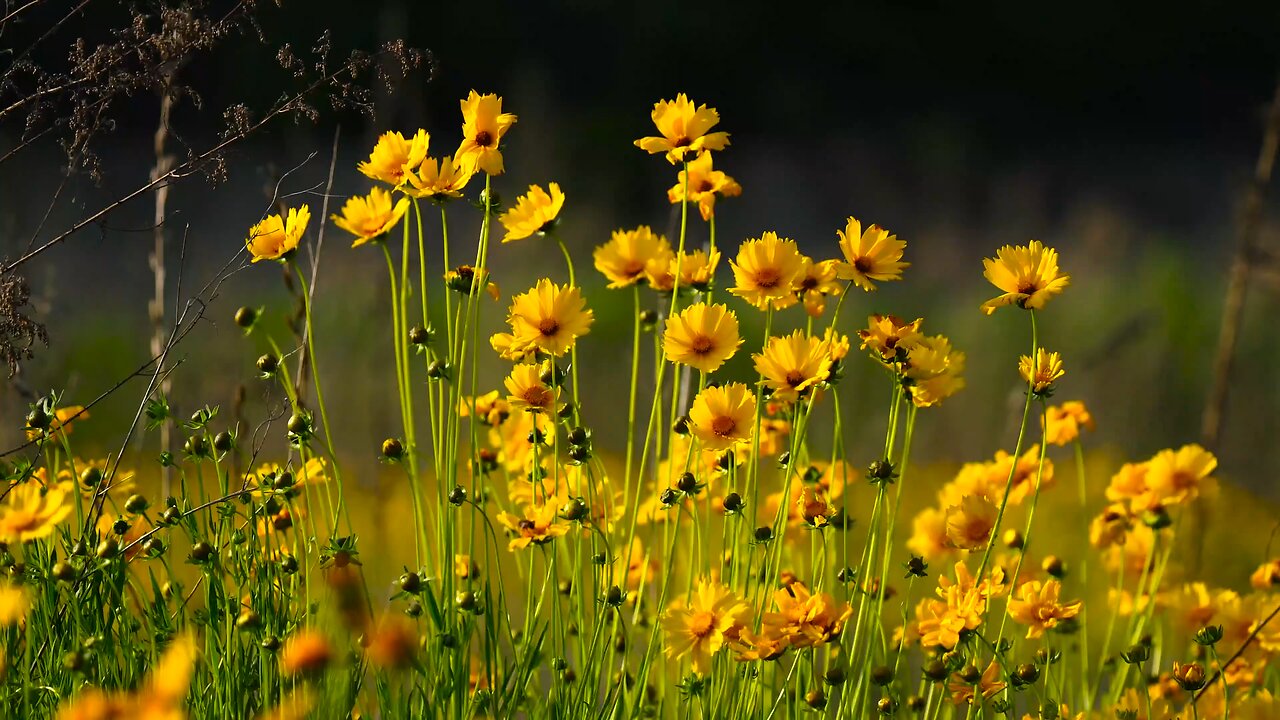Premium Only Content

"The Vibrant World of Coreopsideae: A Deep Dive into the Sunflower Family's Hidden Gems"
Coreopsideae is a tribe within the Asteraceae family, commonly known as the sunflower family. This tribe includes a diverse group of plants, many of which are well-known for their ornamental value and are often found in gardens, meadows, and wildflower mixes. Here’s a detailed look at the Coreopsideae tribe:
### Taxonomy and Classification
- **Family:** Asteraceae (Sunflower family)
- **Subfamily:** Asteroideae
- **Tribe:** Coreopsideae
### Genera and Species
Coreopsideae consists of several genera, with **Coreopsis** and **Bidens** being among the most well-known. There are around 300 species within this tribe. Some notable genera include:
- **Coreopsis:** Often called tickseed, this genus includes species like *Coreopsis tinctoria* (plains coreopsis) and *Coreopsis lanceolata* (lanceleaf coreopsis). They are known for their bright yellow flowers and are popular in ornamental gardening.
- **Bidens:** This genus includes species like *Bidens pilosa* and *Bidens alba*, which are commonly known as beggar-ticks or Spanish needles. They have distinctive barbed seeds that easily stick to clothing or fur.
- **Cosmos:** This genus includes species like *Cosmos bipinnatus* and *Cosmos sulphureus*, which are known for their feathery foliage and showy flowers in various colors.
### Morphology
Plants in the Coreopsideae tribe typically exhibit the following characteristics:
- **Flowers:** They usually have daisy-like flowers with a central disk and surrounding ray florets. The flowers can be yellow, orange, pink, red, or white, depending on the species.
- **Leaves:** The leaves can vary widely, from simple to deeply lobed or pinnate. They are often arranged alternately on the stem.
- **Growth Habit:** Members of this tribe can be annuals, perennials, or shrubs. Many are herbaceous plants that grow in a variety of habitats.
### Distribution and Habitat
Coreopsideae plants are found worldwide but are particularly diverse in North and South America. They are adaptable to a range of environments, from coastal areas to deserts and mountains. Many species are cultivated for their hardiness and ability to thrive in poor soil conditions.
### Ecological Importance
- **Pollinators:** Coreopsideae plants are excellent for attracting pollinators like bees, butterflies, and other insects, making them valuable in ecological gardens and restoration projects.
- **Biodiversity:** They play a role in supporting biodiversity by providing food and habitat for various insects and birds.
### Horticultural Use
- **Gardens and Landscaping:** Due to their bright, showy flowers and ease of growth, many species in the Coreopsideae tribe are popular in gardens and landscapes. They are often used in borders, wildflower gardens, and as cut flowers.
- **Low Maintenance:** Many Coreopsideae plants are drought-tolerant and require minimal care, making them ideal for xeriscaping and low-maintenance gardens.
### Cultural Significance
Some Coreopsideae species have cultural and traditional uses. For example, *Bidens pilosa* is used in herbal medicine in various parts of the world, and *Coreopsis* species have been used historically as a source of dye by Native American tribes.
### Conservation
While many Coreopsideae species are common and not threatened, habitat loss and environmental changes pose risks to some species. Conservation efforts focus on preserving their natural habitats and promoting the cultivation of native species in landscaping.
In summary, Coreopsideae is a diverse and ecologically significant tribe of plants within the sunflower family, valued for both their ornamental beauty and their role in supporting pollinators and biodiversity.
-
 LIVE
LIVE
BonginoReport
2 hours agoTrump Protects Old Glory in New EO! - Nightly Scroll w/ Hayley Caronia (Ep.119) - 08/25/2025
6,479 watching -
 LIVE
LIVE
The Jimmy Dore Show
1 hour agoSnoop Dogg Is DONE w/ LBGTQ+ Propaganda In Kids Movies! Trump Outlaws Burning the U.S. Flag!
5,107 watching -
 UPCOMING
UPCOMING
Quite Frankly
4 hours ago"Weekend News, All-Time Physical Feats, Mixed Reels" 8/25/25
1.31K1 -
 UPCOMING
UPCOMING
The Mike Schwartz Show
1 hour agoTHE MIKE SCHWARTZ SHOW Evening Edition 08-25-2025
32 -
 1:43:44
1:43:44
MTNTOUGH Podcast w/ Dustin Diefenderfer
16 hours agoEddie Penney: DEVGRU to Single Dad of 3 Overnight | MTNPOD #130
222 -
 1:28:57
1:28:57
Kim Iversen
2 hours agoSomeone Stole Kim's Identity — And Bought a Car! | Dr Drew Pinsky On Sex, Drugs & Censorship
23.4K16 -
 1:07:00
1:07:00
TheCrucible
2 hours agoThe Extravaganza! Ep. 26 (with special guest host Rob Noerr) 8/25/25
54.9K4 -
 7:35
7:35
Tundra Tactical
1 hour agoI Can’t Believe I’m Saying This… 2011’s Are Actually COOL Now?! 🤯
3.1K -
 LIVE
LIVE
Wayne Allyn Root | WAR Zone
4 hours agoWAR Zone LIVE | 25 AUGUST 2025
127 watching -
 LIVE
LIVE
Outspoken with Dr. Naomi Wolf
3 hours ago"CPA/Whistleblower Sam Antar Identifies Millions in Fraud Behind Mamdani Campaign"
142 watching